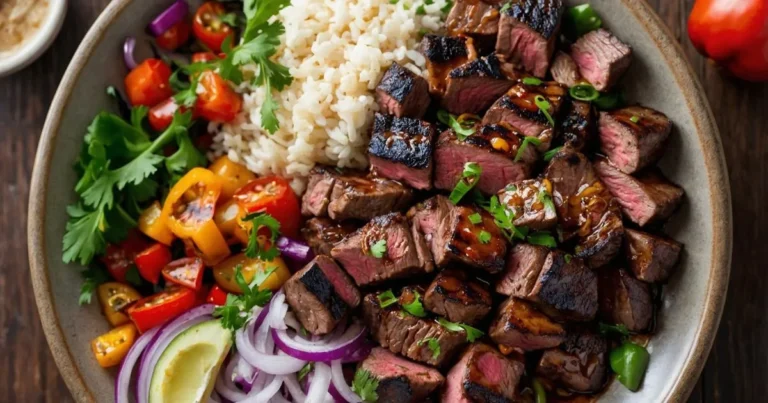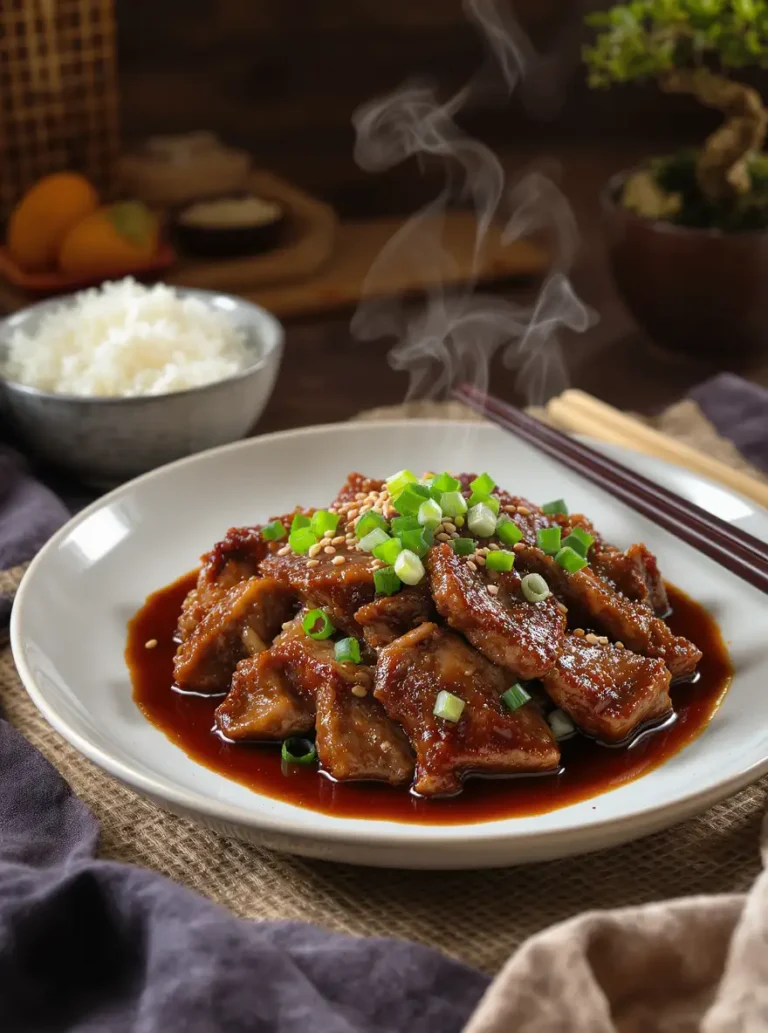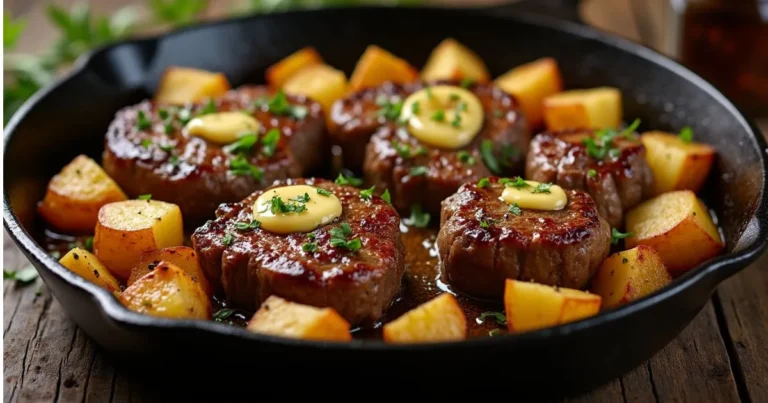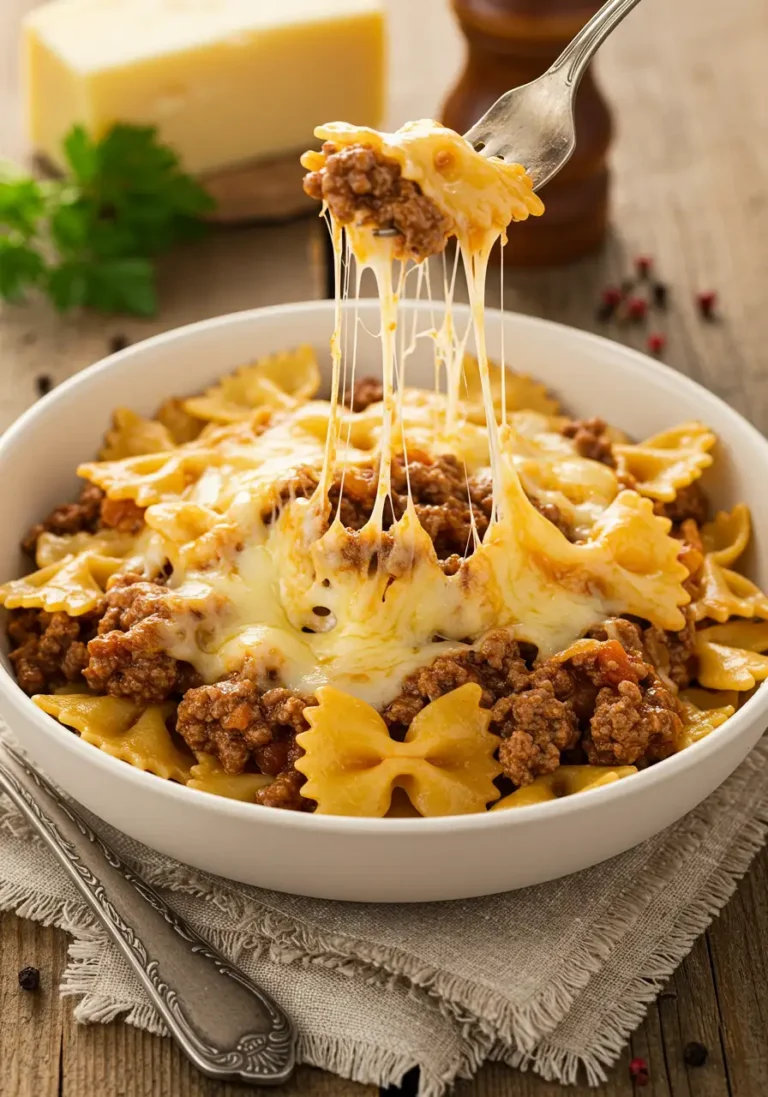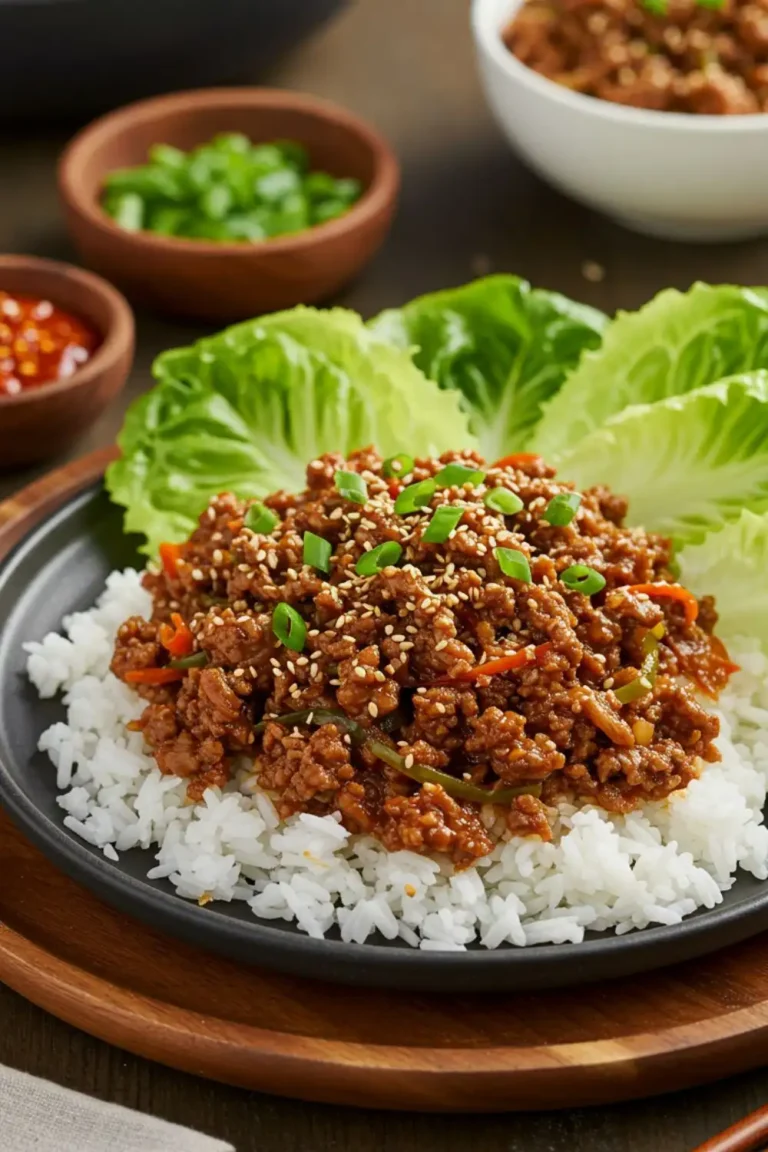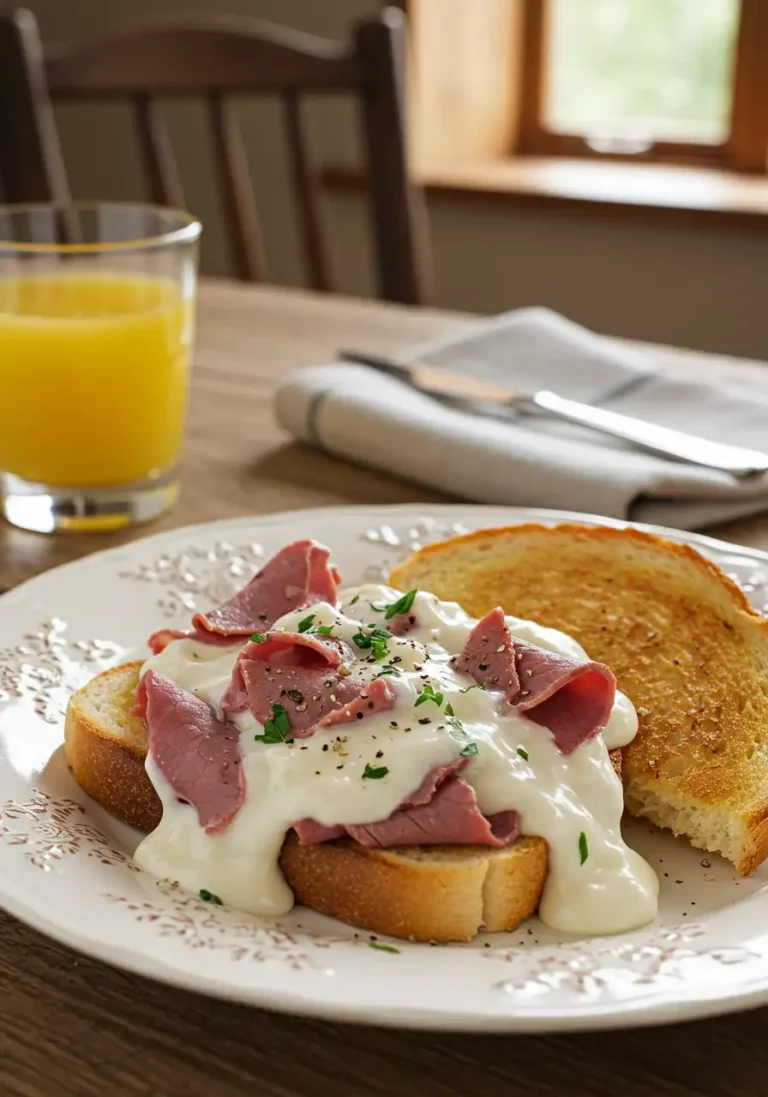How to Make the Best Beef Shank Recipe for Tender Meat
If you’re craving a hearty, savory meal that fills your home with the irresistible aroma of slow-cooked goodness, beef shank is the answer. Often overlooked in favor of other cuts like ribeye or sirloin, beef shank deserves a spot on your dinner table. It’s a cut that, when cooked correctly, transforms into a melt-in-your-mouth delight, full of rich flavor. This guide will show you how to make the best beef shank recipe for tender meat, turning a tough, affordable cut into an unforgettable dish.
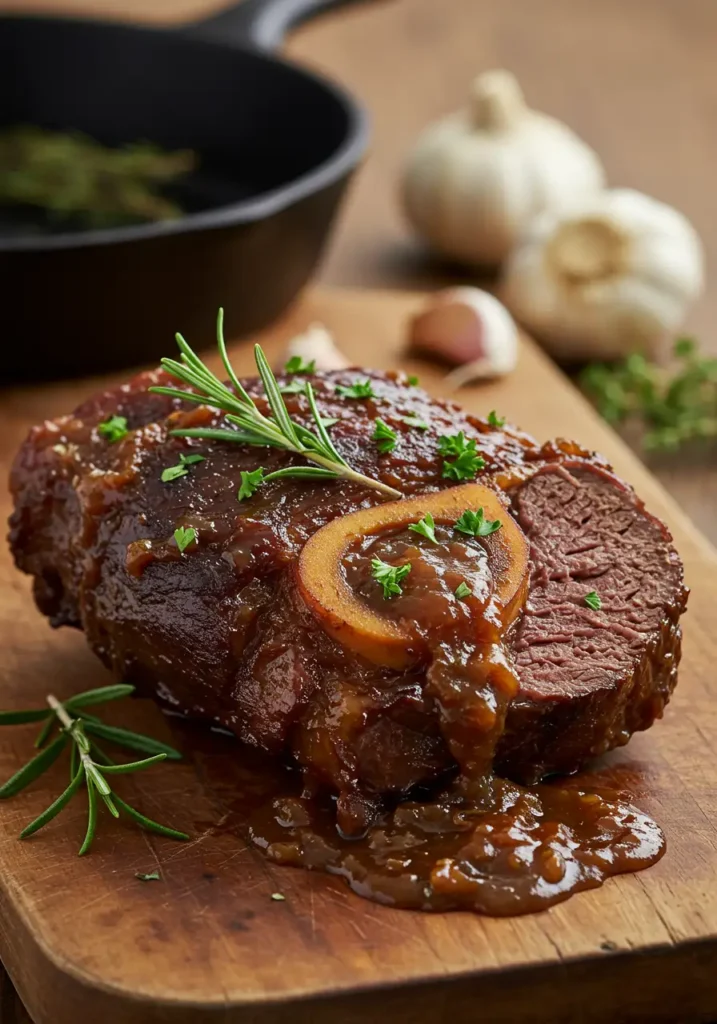
Why Choose Beef Shank for Your Recipe?
You might be wondering, what makes beef shank such a great choice? Unlike other cuts of beef, which are tender due to their muscle structure, beef shank comes from a tougher, more muscular part of the cow. This means that while beef shank can be a bit tough if cooked improperly, it has an incredible potential for flavor when slow-cooked.
The key to its appeal is the presence of collagen, which breaks down during slow cooking, turning into gelatin. This process gives the beef shank its luxurious texture, while also infusing the meat with the delicious flavors from the braising liquid. Not only is beef shank affordable, but it’s also packed with nutrients, including protein, iron, and zinc. So, by choosing beef shank, you’re opting for both flavor and nutrition.
Ingredients You’ll Need for the Best Beef Shank Recipe
The best beef shank recipe requires a few basic ingredients that help build layers of flavor. Here’s what you’ll need:
| Ingredient | Amount | Notes |
|---|---|---|
| Beef Shank | 2-3 lbs | Bone-in or boneless, your choice |
| Onion | 1 large | Diced |
| Carrots | 2 medium | Sliced |
| Garlic | 4 cloves | Minced |
| Red Wine | 1 cup | Optional for rich flavor |
| Beef Broth | 4 cups | For moisture and depth |
| Olive Oil | 2 tbsp | For searing |
| Fresh Herbs | 2-3 sprigs each | Rosemary, thyme, bay leaves |
Additional Notes:
- Beef Shank: It’s best to use bone-in beef shank for extra flavor, but boneless works fine too.
- Liquid: The combination of beef broth and red wine creates a rich, aromatic base that complements the beef’s natural flavors. If you’re avoiding alcohol, you can substitute the wine with extra broth.
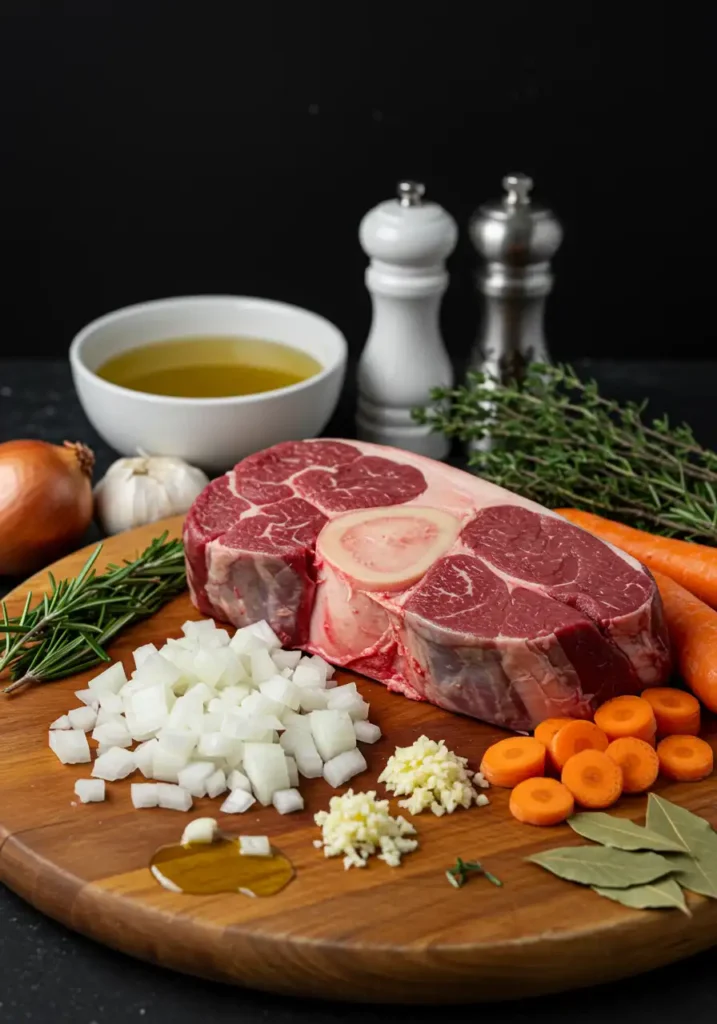
How to Prepare Beef Shank for Cooking
Properly preparing your beef shank is crucial for getting that melt-in-your-mouth texture. Here’s a simple step-by-step guide to set yourself up for success:
- Season the Beef Shank:
Start by patting your beef shank dry with paper towels. This will help the seasoning adhere better. Then, generously season both sides of the shank with salt, pepper, and dried herbs like thyme or rosemary. You want to build a flavorful crust, so don’t skimp on the seasoning. - Sear the Beef:
Heat olive oil in a large pot over medium-high heat. Once hot, carefully place the beef shank in the pot. Sear each side until it’s deeply browned—this usually takes 4-5 minutes per side. Searing is essential because it locks in the juices and enhances the beef’s flavor, creating a rich base for the rest of the dish. - Sauté the Vegetables:
After removing the beef, add your chopped onions, carrots, and minced garlic to the pot. Cook for 2-3 minutes until the vegetables begin to soften, scraping up any browned bits from the bottom of the pot. This adds even more flavor to the dish.
Cooking Techniques for Tender Beef Shank
Now that your beef shank is seared and the vegetables are sautéed, it’s time to cook the beef until it’s perfectly tender. The key to success here is slow cooking—whether you choose to braise it in the oven, on the stovetop, or in a slow cooker, the process is the same: low and slow is the secret.
Oven Braising Method:
- Preheat the Oven:
Preheat your oven to 300°F (150°C). This low temperature will slowly break down the connective tissue in the beef, making it tender. - Add the Liquids:
Pour in your beef broth and red wine. The liquid should cover about half of the beef shank. You can add a bit more broth if needed. Stir in fresh herbs like thyme and rosemary, and drop in a couple of bay leaves. - Braise in the Oven:
Cover the pot with a tight-fitting lid or aluminum foil and place it in the oven. Braise the beef for 2.5 to 3 hours, or until the meat is fork-tender and starts to fall off the bone. The slow cooking process allows the beef to become so tender that you can pull it apart with a fork.
Slow Cooker Method:
If you prefer a hands-off approach, the slow cooker is a great option. Simply follow the same steps for seasoning and searing the beef, then place it in the slow cooker with your sautéed vegetables and liquids. Cook on low for 6-8 hours, or until the meat is fork-tender.
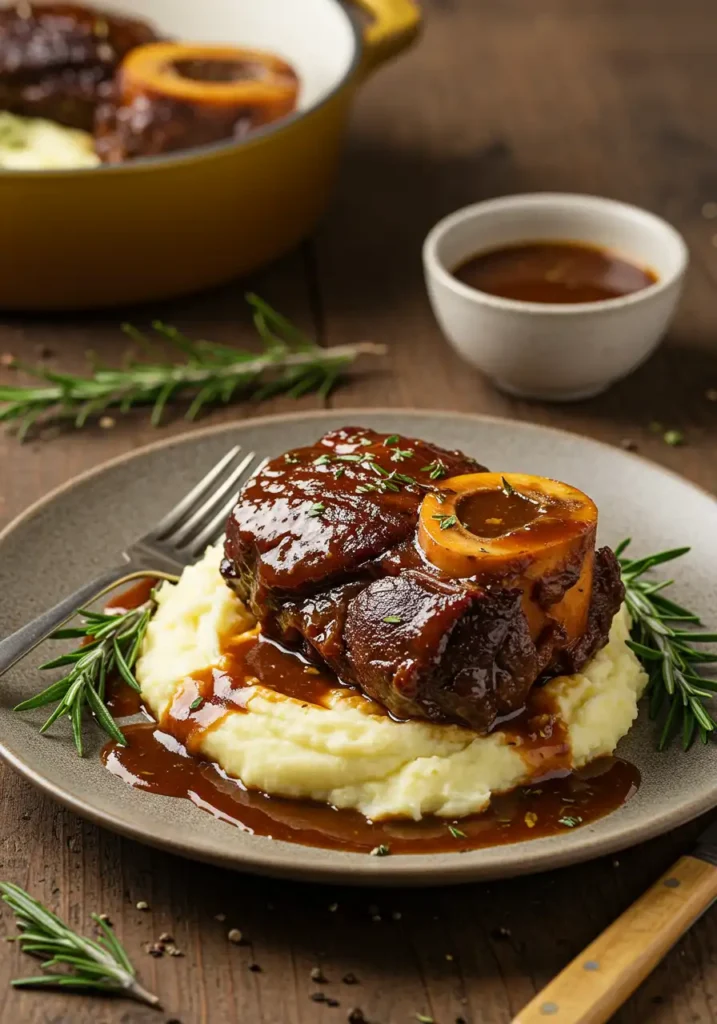
Tips for Perfecting Your Beef Shank Recipe
While making beef shank is fairly simple, there are a few key tips that will take your dish from good to great:
- Don’t Rush: Patience is key when cooking beef shank. The slower you cook it, the more tender it will be.
- Layer Your Flavors: Searing the meat, adding aromatic vegetables, and using a rich broth and wine mixture all contribute to the depth of flavor in your beef shank recipe.
- Check for Doneness: You’ll know the beef shank is ready when the meat easily falls off the bone. Test it with a fork to ensure it’s cooked through.
- Resting: After removing the beef shank from the pot, let it rest for 10 minutes before slicing. This helps the juices redistribute throughout the meat, making it even juicier and more flavorful.
Serving Suggestions for Beef Shank
Beef shank is a hearty, filling meal that pairs wonderfully with a variety of sides. Here are a few ideas:
- Mashed Potatoes: The rich, creamy texture of mashed potatoes complements the tender beef perfectly.
- Steamed Vegetables: Broccoli, asparagus, or green beans add a fresh, healthy contrast to the richness of the beef.
- Crusty Bread: Serve with a loaf of fresh, crusty bread to soak up the delicious sauce.
- Polenta: Creamy polenta is another excellent option for pairing with beef shank, as it absorbs the flavorful broth.
Common Mistakes to Avoid When Cooking Beef Shank
To ensure that your beef shank turns out perfectly tender, avoid these common mistakes:
- Not Cooking Long Enough: Slow cooking is essential for breaking down the tough fibers in beef shank. Don’t rush the process by turning up the heat.
- Not Using Enough Liquid: Beef shank needs plenty of liquid to braise properly. If the liquid doesn’t cover the beef, it will dry out.
- Skipping the Sear: Searing the beef before braising enhances flavor and creates a rich base for the sauce. Don’t skip this step!
Frequently Asked Questions (FAQ)
What is the best method for cooking beef shank?
The best method for cooking beef shank is slow braising, whether in the oven, on the stovetop, or in a slow cooker. This allows the tough meat to break down into tender, flavorful pieces.
How long should I cook beef shank for tender meat?
Beef shank should be cooked for 2.5 to 3 hours at a low temperature in the oven, or 6-8 hours in a slow cooker, until the meat is fork-tender.
Can I use a slow cooker for this beef shank recipe?
Yes, a slow cooker is an excellent option for making beef shank. Just follow the same preparation steps and cook on low for 6-8 hours.
Can I freeze leftover beef shank?
Yes, leftover beef shank can be frozen for up to 3 months. Ensure it’s stored in an airtight container to preserve its flavor and texture.
Conclusion: Your Best Beef Shank Recipe Awaits
Beef shank may take time, but the results are definitely worth it. By following these steps, you’ll be able to cook a tender, flavorful meal that will have your friends and family coming back for seconds. Whether you’re serving it with mashed potatoes, polenta, or a simple salad, this beef shank recipe will become a favorite in your home.
Ready to make the best beef shank recipe? Try it today, and enjoy a melt-in-your-mouth beef dish that’s easy to prepare and perfect for any occasion!
Have you tried our recipe yet?
There are no reviews yet. Be the first one to write one.

